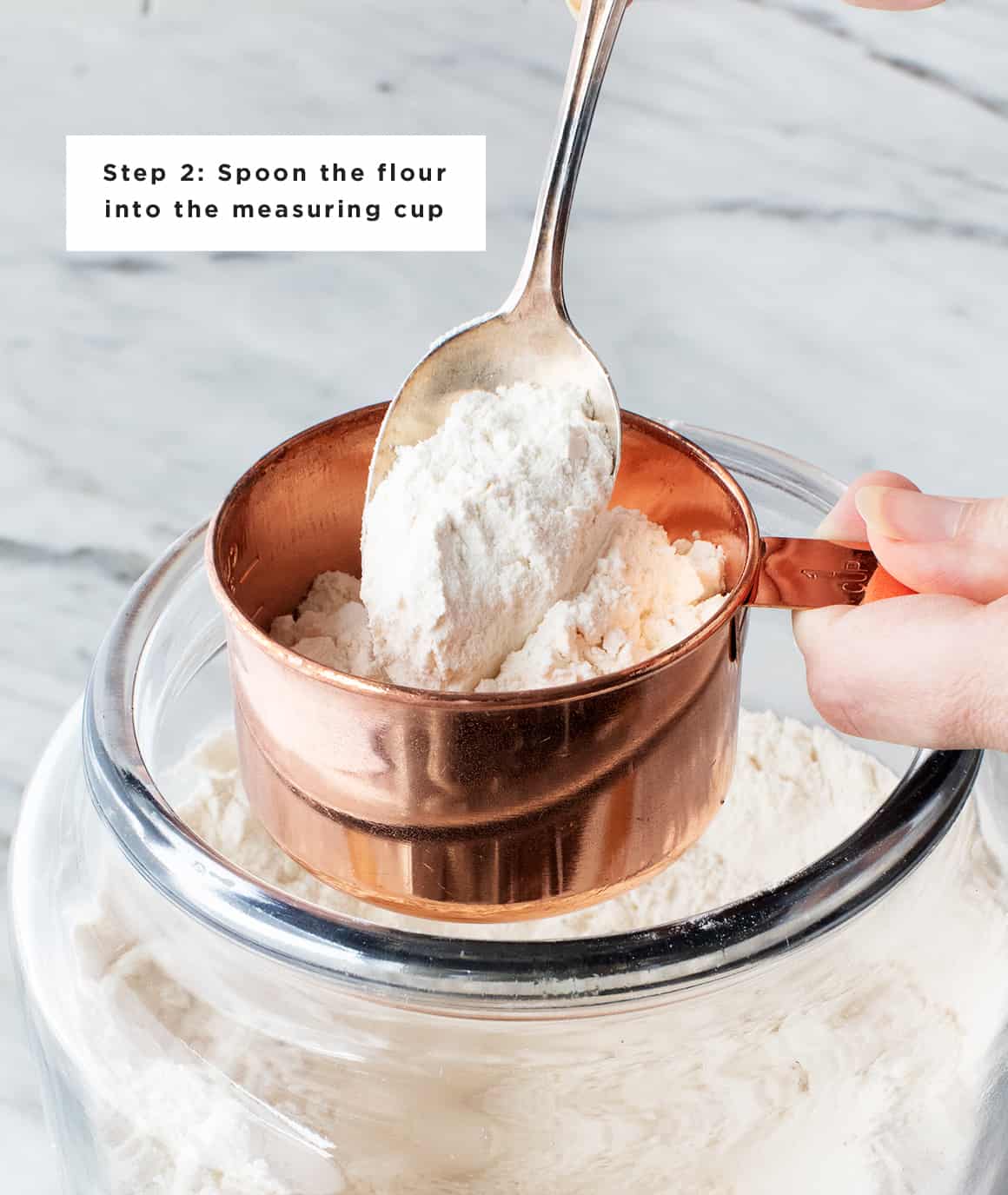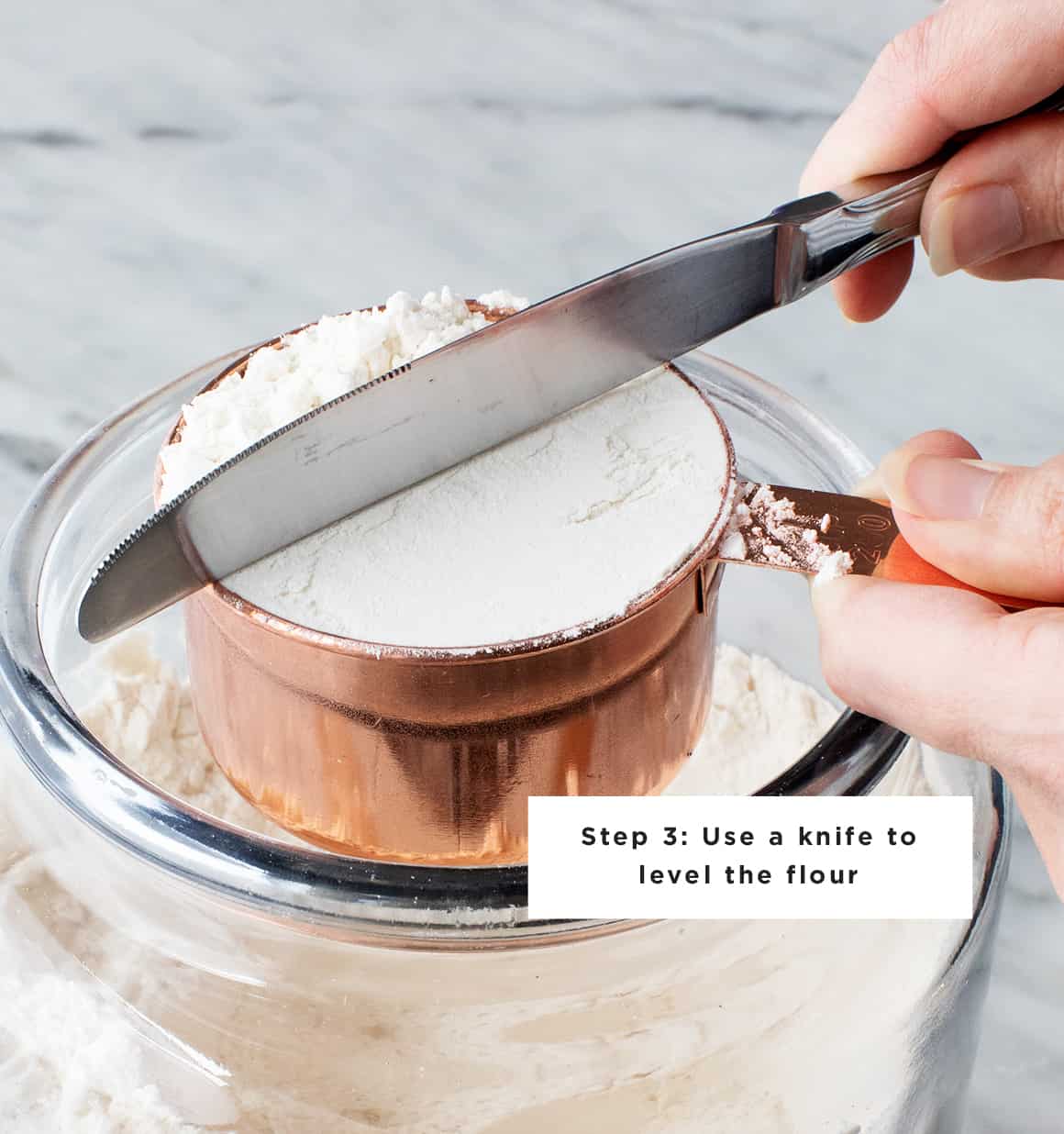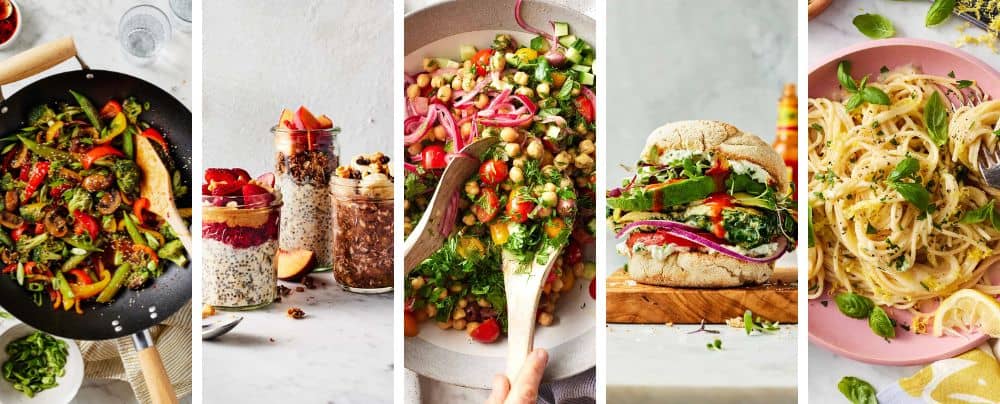Learn how to measure flour accurately for baking recipes! With these two easy methods, you'll get great results every time.

Have you ever made a bread or cake recipe that promised to be moist and tender but turned out to be dry and dense? You’re not alone. This is a common problem in baking, and often, the solution is trying a new method for how to measure flour.
First, if you don’t already have a kitchen scale, get one, because weighing your flour will give you the most accurate measurement every time. When you weigh the flour for a recipe, you know exactly how much you’re using. By contrast, when you measure by volume, the actual amount of flour you use varies based on a variety of factors – your specific measuring cups, how you scoop the flour, how tightly you pack it, and more. If a recipe calls for a cup of flour, you could end up using as much as 1.25 times more. A difference this large can have a huge impact on how your baked goods turn out.
Kitchen scales don’t have to be expensive, and they’re easy to store. Mine is similar to this one, and it’s the perfect size to tuck into a drawer under my potholders. Trust me, if you bake often, you’ll loving having a scale in your kitchen!

How to Measure Flour with Measuring Cups
But what if you don’t have a scale? Can you still bake?
Of course! Though weight measurements will always be the most accurate for baking, you can still get good results with the spoon-and-level method for how to measure flour. Here’s what you need to do:
First, fluff up the flour in the bag or canister. Flour settles easily, becoming tightly packed inside a bag or jar. In order to make sure you’re not scooping up packed flour, you should fluff it up with a spoon or fork before you measure it.

Second, spoon the flour into the measuring cup. Gently pile it in until it forms a heap above the rim of the measuring cup. Don’t pack the flour down.

Then, scrape a knife across the top of the measuring cup to level the flour. This way, you’ll get rid of excess flour on top of the cup without packing down the flour inside.

Whatever you do, DON’T scoop the flour directly from the canister. This flour is often densely packed, so dipping the measuring cup into the bag or jar will yield too much flour nearly every time.

For reference, 1 cup of spooned and leveled all-purpose flour should weigh between 120 and 125 grams.

Conversely, a scooped and packed cup can weigh up to 155 grams. That’s over 30 grams more!
Weighing your flour is always the best way to go, but if you don’t have a scale, spooning the flour into a measuring cup and leveling it with a knife is your next best bet.
Favorite Baking Recipes
Want to try this method for how to measure flour? Give it a go in any of these recipes:
- Homemade Bagels
- No-Knead Bread
- Cinnamon Rolls
- Homemade Pizza Dough
- Steamed Bao Buns
- Homemade Hamburger Buns
- Rosemary Focaccia Bread
- Or any of these 25 Super Fun Baking Recipes!

How to Measure Flour
Ingredients
- 1 cup flour
Instructions
- First, fluff up the flour in the bag or canister. Flour settles easily, becoming tightly packed inside a bag or jar. In order to make sure you're not scooping up packed flour, you should fluff it up with a spoon or fork before you measure it.
- Spoon the flour into the measuring cup. Gently pile it in until it forms a heap above the rim of the measuring cup. Don't pack the flour down.
- Scrape a knife across the top of the measuring cup to level the flour. This way, you'll get rid of excess flour on top of the cup without packing down the flour inside.
- DON'T scoop the flour directly from the canister. This flour is often densely packed, so dipping the measuring cup into the bag or jar will yield too much flour nearly every time.
- 1 cup of spooned and leveled all-purpose flour should weigh between 120 and 125 grams.








That would be so great to have the measures in grams in your recipes. They are all delicious looking and very tasty from my French point of view. Thanks for inspiring my every day cooking !
I’ve only just signed up and what joy, the first thing I see was how to measure flour. This is really useful for the uk bakers. The American cups are a bit of a mystery to us, we normally weigh everything. I have tried American recipes before but they’ve never been quite right because I didn’t understand the flour ratio. So a bit thank you?! I’m off to make your brownies ?
Thanks for your helpful recipes.
However not putting grams is frustrating.
Its so much easier to just weight out products in grams.
How do you convert sifted 1 cup to 1 cup of all purpose flour
Hi Brenda, I would measure first using the spoon and level method (or weigh), and then sift the flour.
I hope you consider putting weights in your recipes in the future. I do weigh my ingredients, so it’s frustrating having to calculate it myself and hope other types of flour are going to be the same as what you used.
Thank you so much. The last time I made a pie crust it came out soggy. But most times before it came out okay. I bet my problem has to do with inconsistency in my measuring methods. This will surely help me maintain consistency!
Hi! I tried weighing 1 cup of spoon-leveled all purpose flour but it’s not equal to 120-125g. Which weighing tool would you suggest, the cup or the digital weighing scale?
the scale measurement is always best since there can be such variation in amount of flour while measuring with cups. If your cup is much past 125g then you might fluff up your flour a little more before scooping.
That’s the thing, though, it was less than 120g.
it’s possible you’re scooping a little too loosely, in that case.